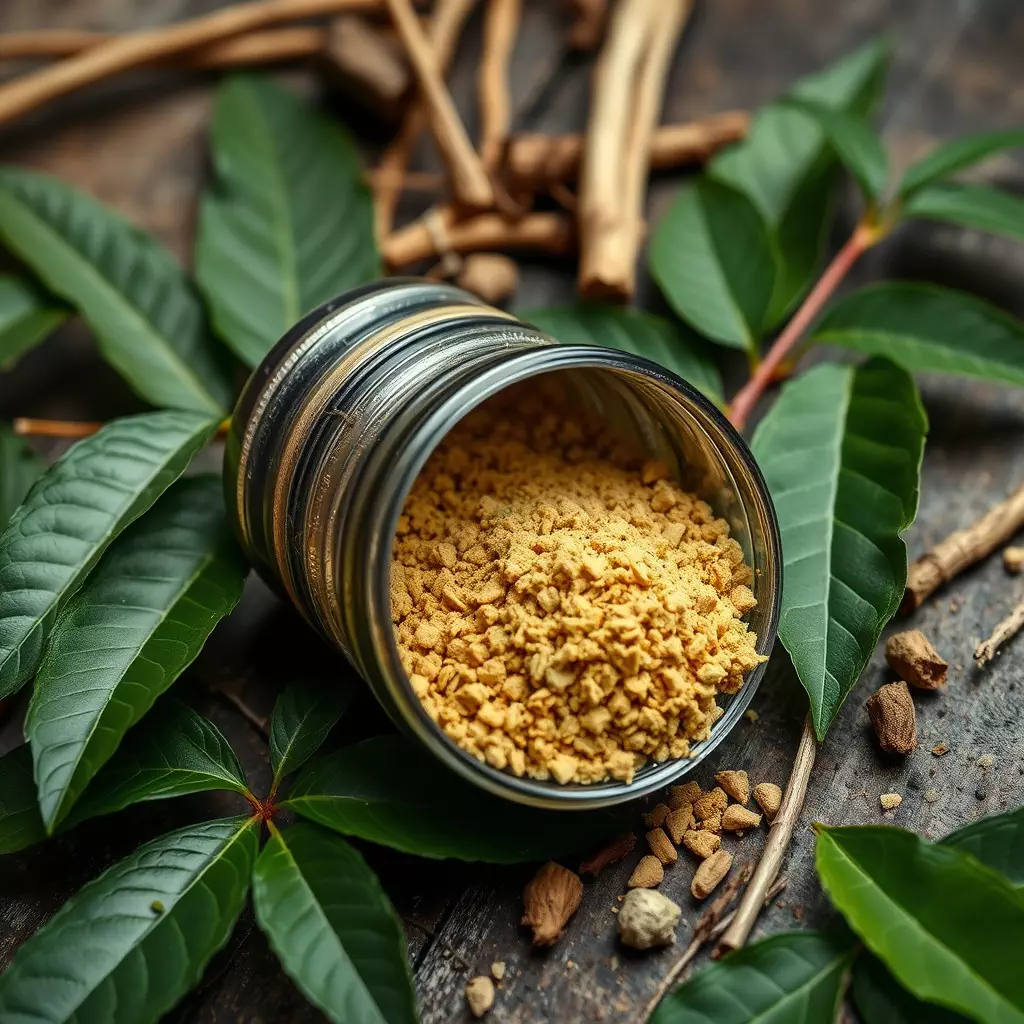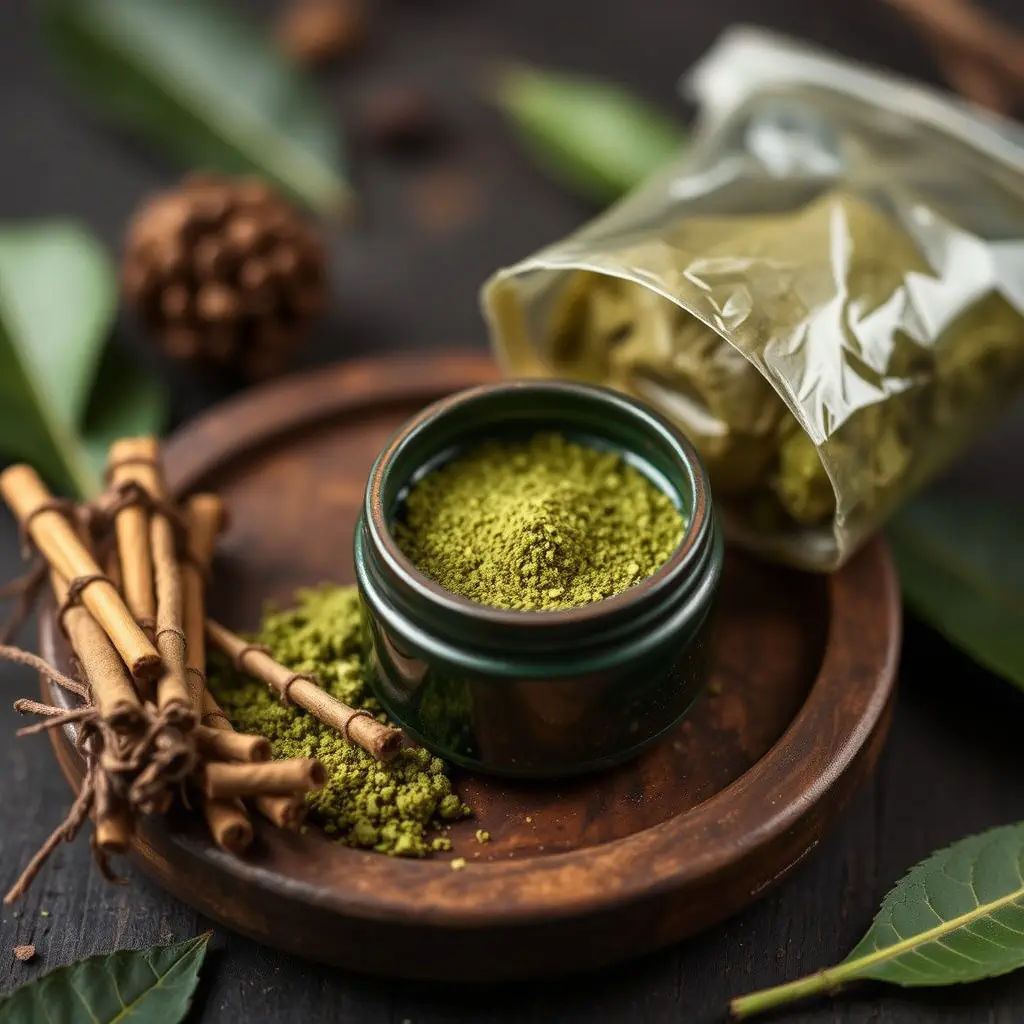Kratom, derived from the Southeast Asian Mitragyna speciosa tree, has garnered attention for its potential stress relief benefits. The alkaloids mitragynine and 7-hydroxymitragynine found in kratom leaves are believed to engage with the brain's receptors, offering effects that may aid in relaxation and stress management. Users often report improved mood and reduced anxiety levels after consuming kratom, suggesting its use as a natural alternative for daily stress relief. These alkaloids influence key neurotransmitters like dopamine and serotonin, which are essential for regulating mood. However, due to its varying legal status and potential interactions with other substances, it's crucial to approach kratom cautiously. Research is ongoing to understand its long-term effects, emphasizing the importance of responsible use within a comprehensive wellness plan. Prospective users should consult healthcare professionals for guidance on safe usage and stay informed about current research findings on kratom's efficacy and safety for stress relief. The article also highlights the importance of selecting the right strain, like Maeng Da or Bali, and understanding dosage for optimal relaxation effects. A holistic approach to stress management that includes lifestyle adjustments is recommended to maximize benefits and promote overall health and resilience.
Discover the serene potential of kratom as a natural aid for stress relief and relaxation. This article delves into the transformative effects of kratom, exploring its capabilities to promote tranquility and calmness. From examining various strains and appropriate dosages to integrating it seamlessly into a comprehensive stress management regimen, “Stress Relief with Kratom” offers a well-rounded perspective on harnessing this botanical compound for optimal mental peace. Join us as we navigate the nuances of kratom’s role in achieving a state of calm amidst life’s demands.
- Unraveling the Potential of Kratom for Stress Relief: An Overview
- Understanding Kratom Strains and Dosages for Optimal Calmness
- Incorporating Kratom into a Holistic Stress Management Routine
Unraveling the Potential of Kratom for Stress Relief: An Overview

Kratom, a plant native to Southeast Asia, has garnered attention in various natural health circles for its potential stress relief benefits. The active compounds found in kratom leaves, known as mitragynine and 7-hydroxymitragynine, are believed to interact with the brain’s receptors, leading to a range of physiological effects that may contribute to relaxation and stress relief. Users often report feelings of well-being and reduced anxiety after consuming kratom, suggesting its use as a natural alternative for managing daily stress. The alkaloids present in kratom are thought to modulate neurotransmitters such as dopamine and serotonin, which play significant roles in mood regulation. This modulation can lead to an uplifting effect that helps individuals cope with the challenges of a demanding environment, thereby promoting relaxation and calmness without the side effects commonly associated with pharmaceutical stress relief medications.
It’s important for potential users to approach kratom with caution due to its complex legal status and potential for interactions with other substances or medications. Research into the long-term effects of kratom is still emerging, and while it holds promise for stress relief, it should be used responsibly and as part of a holistic approach to wellness that includes lifestyle modifications and healthy coping strategies. The exploration into kratom’s efficacy for stress relief is ongoing, with ongoing studies aiming to clarify its mechanisms of action and safety profile. As such, individuals interested in exploring kratom for stress relief should seek guidance from healthcare professionals to ensure safe usage and to understand the current body of research surrounding this intriguing botanical compound.
Understanding Kratom Strains and Dosages for Optimal Calmness

Kratom, a tropical tree native to Southeast Asia, has garnered attention for its potential stress relief benefits. Among the many kratom strains available, each with distinct alkaloid profiles, some are particularly favored for promoting relaxation and calmness. To harness kratom for optimal calmness, it’s crucial to understand the nuances between strains and their recommended dosages. The two primary types of kratom are the Maeng Da and Bali strains, each offering different effects. Maeng Da is known for its invigorating and pain-relieving properties, which can contribute to a sense of well-being and calmness without overpowering sedation. In contrast, Bali kratom is renowned for its soothing effects, making it an ideal choice for those seeking stress relief with kratom.
When considering dosage, it’s important to start low and go slow, as individual sensitivities to kratom can vary significantly. A typical starting dose for beginners might range from 1 to 3 grams, depending on the user’s body composition, tolerance, and the desired effect. For those aiming for stress relief, a moderate dose of 4 to 6 grams may be more effective, as it can enhance relaxation without leading to excessive sedation. It’s also essential to approach kratom use with caution, as higher doses can result in adverse effects and tolerance buildup over time. Therefore, consistency and moderation are key when incorporating kratom into a routine for stress relief. Always prioritize quality and purity when sourcing kratom, and consult with a healthcare professional before integrating it into your wellness regimen.
Incorporating Kratom into a Holistic Stress Management Routine

incorporating Kratom into a holistic stress management routine can be a beneficial practice for individuals seeking natural stress relief. Kratom, derived from the leaves of the Mitragyna speciosa tree, has been traditionally used in certain Southeast Asian cultures for its potential wellness effects. In the context of stress relief with Kratom, it’s important to approach its use thoughtfully and responsibly, considering the strain and dosage that best align with one’s unique physiology and the nature of their stressors. For instance, certain Kratom strains like Bali or Red Vein Thai are often favored for their calming properties, which can contribute to a sense of tranquility and help mitigate stress. It’s crucial to complement Kratom use with other holistic practices such as regular exercise, mindfulness meditation, proper nutrition, and adequate sleep to create a comprehensive approach to managing stress. This multifaceted routine not only addresses the immediate symptoms of stress but also promotes long-term wellbeing, ensuring that the individual can maintain a balanced state even in challenging circumstances. Users should always consult with healthcare professionals before integrating Kratom into their stress management regimen, especially if they have underlying health conditions or are taking other medications.
In our exploration of natural stress management, the potential benefits of kratom as a tool for relaxation and calmness have been illuminated. From delineating the various strains and appropriate dosages to integrating kratom into a comprehensive wellness regimen, it’s clear that incorporating kratom could play a role in achieving stress relief with kratom. It’s imperative for individuals to approach this subject with caution, considering the unique physiological and legal landscapes of their circumstances. As such, a tailored, informed approach is key when exploring kratom’s potential for personal well-being. Prospective users are encouraged to consult with healthcare professionals to navigate this path safely and effectively, ensuring that stress relief efforts align with individual needs and health considerations.






